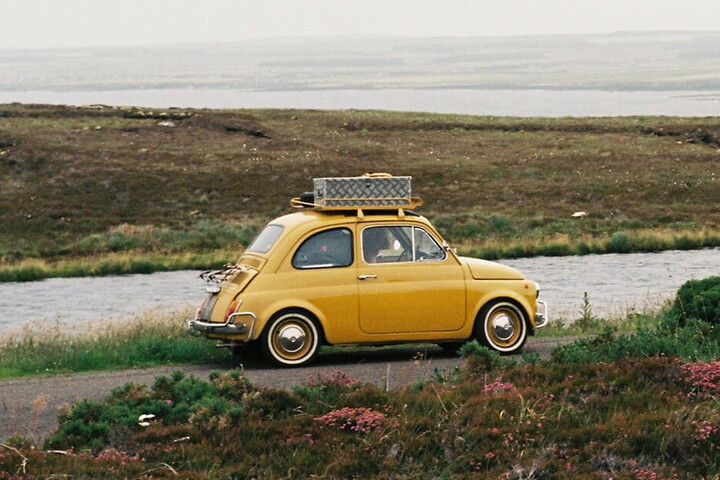The 60s were the years of the “economic miracle”: Italy was growing in all aspects, there was optimism, enthusiasm and a general desire for well-being. To testify to this, what is considered somewhat the manifesto of the new decade, namely the film La Dolce Vita, by Federico Fellini, starring Anita Ekberg and Marcello Mastroianni, came out in 1960, and it also brought celebrity to another symbol of the motion picture, one on two wheels, i.e. the Vespa. These were extraordinary years for Italian design, with iconic cars and personalities who have made history and partly continue to do so. Men like Giorgetto Giugiaro, an exuberant 20-year old, who in that decade, at the service of Bertone, created the Alfa Romeo Giulia GT, then moved to the Ghia where he gave rise to three gems (Maserati Ghibli, De Tomaso Mangusta, ISO Rivolta Fidia) and founded Italdesign with Aldo Mantovani in 1968, starting a great new adventure.
250 GTO and Miura, the birth of supercars
Italy at that time was teeming with big and small Manufacturers, with excellent ateliers in style. Ferrari was already an established manufacturer; just think that in 1962 it ‘churned out' the 250 GTO, which was not only the most exclusive car with the Cavallino ever, but also one of the sexiest cars in history. A legend on four wheels, a coupé created for racing (three consecutive World Manufacturers' Championships) which can also be used on normal roads. A 3.0 V12 engine boasting approximately 300 HP, silhouettes by Sergio Scaglietti and a design by Giotto Bizzarrini completed by a young man from Modena, Mauro Forghieri, who was set to go a long way. Then another legend arrived, in 1966, from Lamborghini's direct rivals: the Miura, a splendid two-seater sports coupé, with the V12 cross rear engine, ‘dressed' by the talented Marcello Gandini, under the command of Bertone.
Gandini and Scaglione
Gandini was another genius. Capable of creating revolutionary concepts at the time (Lamborghini Marzal in 1967 and Alfa Romeo Carabo the year after) but also a standard production model for the general public such as the Autobianchi A112 in 1969. Equally innovative was Franco Scaglione, an aerodynamic specialist who was raised at Bertone. Having set up shop on his own, in the 60s he designed the first ever Lamborghini car (the prototype of the 350 GTV) and in 1967 the Alfa Romeo 33 Stradale for which he is remembered. A masterpiece of aesthetics and practicality: for example, the bonnet opens fully to facilitate access to mechanical parts, while the doors - resembling a beetle's forewings - facilitate entry into the passenger compartment, which is theoretically very complicated in a car that is less than one metre high.
The great ‘discoveries'
1966 saw the birth of what for over 30 years and four generations (six if we consider the subsequent two front-wheel drive versions) was to become the Italian spider par excellence and the icon of the Alfa Romeo brand. A durable model whose silhouette evolved, always at the hand of Pininfarina, along with the engines, while retaining the base, derived from the equally fortunate Giulia saloon of 1962, and the technical content until 1995.The fact it became a popular phenomenon is evidenced by the name: the House of the Biscione baptised it simply the Spider while the public assigned it two nicknames, the first of which – Duetto – was the result of a competition organised by the Manufacturer itself and went on to be used to designate the entire dynasty. Under the bonnet roared the four-cylinder 1600 of the Alfa Romeo Giulia Sprint GT. Another great ‘discovery' was the Flavia Convertible Vignale, a four-seater convertible, derived directly from the Lancia saloon and crafted by the hand of Giovanni Michelotti. In production from 1963 to 1967, it was powered by the Coupé variant engine, a four-cylinder 1.8-litre boxer engine with 92 HP. The passenger compartment was made with extreme care and conveyed absolute elegance.
Cars born to be (and to become) sports cars
Those were years when sports cars were able to engage a large number of fans. Just think of the success of the Abarth versions of the Fiat 600: the 850 TC and 1000 TC where the acronym stood for "Turismo Competizione" and emphasised how the modifications had been designed for the world of racing competitions. They were derived from the Fiat 600 supplied by Fiat to Abarth without certain mechanical parts that were subsequently assembled in the workshop: they delivered 55 and 85 HP, which in the latter case with TCR radial head went up to as much as 115 HP. The Fiat 850, produced between 1964 and 1971 in over 2.2 million units, also had a Coupé variant that made you dream. Under the rear bonnet was the engine of the 600D, with greater displacement, delivering 47 HP for a peak of 145 km/h. One of the first sports cars for the family in the history of motoring: the 60s were truly formidable for Italy on four wheels.




